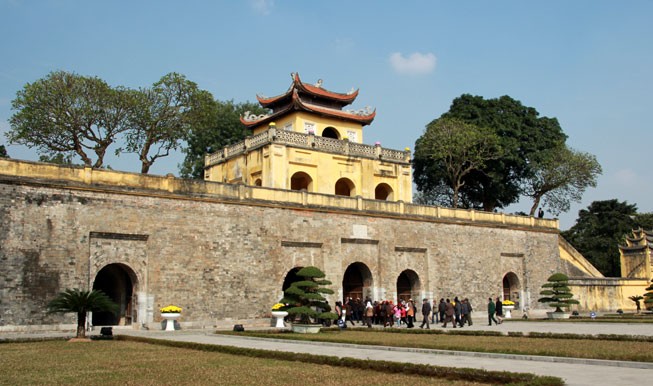
Hanoi: Over 4 trillion VND are already earmarked for the restoration of 500 relic sites
Latest
 |
| Imperial Citadel of Thang Long. |
The Ministry of Culture, Sports and Tourism hails the capital city of Hanoi for investing in relic restoration, its Deputy Minister Hoang Dao Cuong was speaking at a recent meeting of the Steering Committee for preservation of Thang Long Imperial Citadel and Co Loa relic site to review its activities till the first quarter this year and launch 2023 tasks.
Cuong said according to the Resolution of the municipal Party Committee, over 4 trillion VND are already earmarked for the restoration of 500 relic sites, adding that Hanoi is holding a huge amount of cultural heritages for the country.
Hanoi is home to more than 1,200 recognised relic sites, accounting for one-third of this type of valuable site nationally.
Director of the Thang Long - Hanoi Conservation Centre Nguyen Thanh Quang said as of April 15, the Thang Long Imperial Citadel welcomed 250,640 visitors, 26.1% of them were foreigners while 135,379 visitors arrived in Co Loa relic site. Their total revenue from fees and charges hit 5.62 billion VND (244 billion USD), or 80% of the assigned plan. Especially, more than 300 delegates attending the 12th Vietnam-France decentralisation cooperation conference experienced a night tour to explore the Thang Long Imperial Citadel which was recognised by UNESCO as a World Heritage Site in 2010 - on the night of April 15.
Regarding Kinh Thien Palace – the most important building in the citadel, Hanoi has sought recommendations from international experts to preserve the relic.
The municipal People’s Council has issued resolutions relating to the approval or adjusting investment policies for a number of projects using the city’s public investment capital. Some examples are the conservation project of the archaeological site at 18 Hoang Dieu Street; upgrading of An Duong Vuong Temple and Ngoc Well; upgrading of Co Loa Communal House or Ngu Trieu Di Quy and My Chau Temple; and a project on building a temple dedicated to King Ngo Quyen.
Hanoi is mobilising all resources to protect and promote the values of the city's intangible cultural heritage under a plan until 2025.
The municipal Department of Culture and Sports is tasked with closely coordinating with relevant agencies, local authorities and communities in deploying solutions to protect the heritages. Dissemination campaigns will be launched to introduce the intangible heritage value to both Vietnamese and international visitors, contributing to enhancing the community awareness of the work.
The city will compile scientific dossiers for several local intangible cultural heritages to submit to the MoCST seeking inscription of them on the list of national intangible cultural heritage, as well as develop publications on the heritages. Training courses will be organised to improve the practice or performance skills for typical intangible cultural performances that are on the verge of disappearing.
Favourable policies will be issued for artists along with the restoration of various types of intangible cultural heritage. The city will encourage and facilitate the collection and introduction of these heritages by both organisations and individuals.
The city will promote socialisation of resources to preserve and promote their value by attracting the attention and support of organisations, individuals, and businesses in the field.
With 1,793 intangible cultural heritages, including three UNESCO-recognised Intangible Cultural Heritages of Humanity, the capital city is one of the communities with the richest traditions in Vietnam.

















